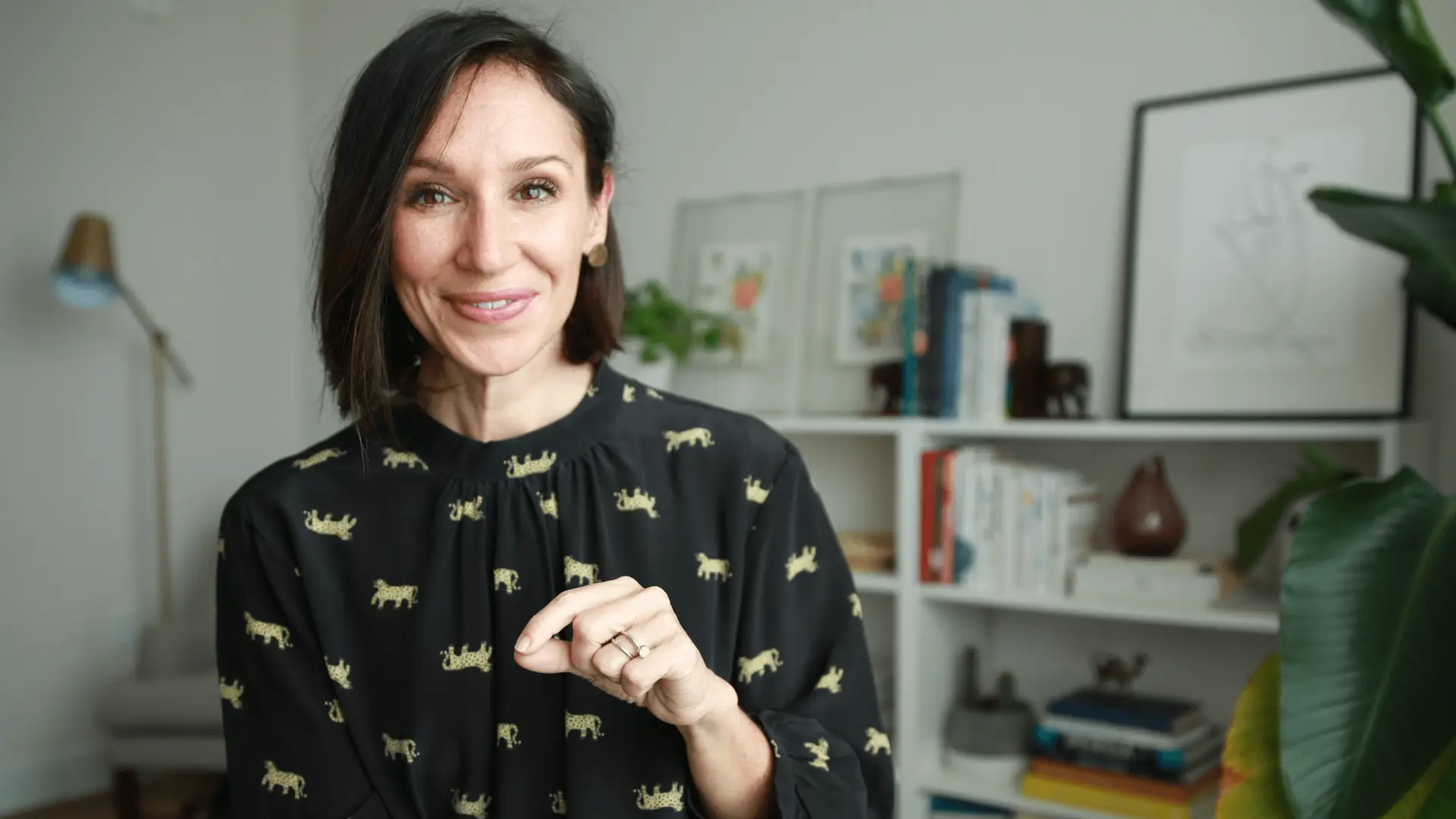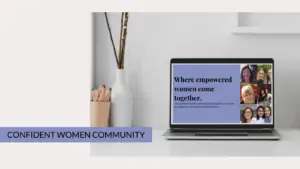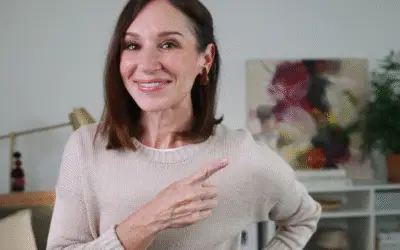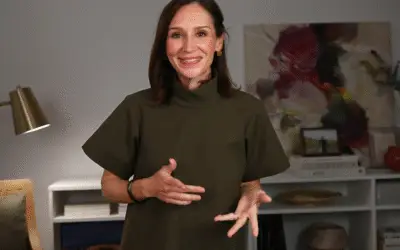#238: In/At/On | Use Prepositions of Place Correctly

There is no question that the prepositions in English – including prepositions of place such as in, at, and on – are a constant source of frustration.
Not only are the grammar rules for prepositions in English different from the rules you might have in your language, which means you can’t directly translate how to use them, but also, the grammar rules we have for prepositions aren’t really rules at all.
Rather, we have patterns that can be difficult to remember and use accurately.
Today, my goal is to change that.
In this Confident English lesson today, you’ll learn 4 simple visual patterns so you can easily picture in your mind which preposition of place to use when you’re choosing between in, at, and on.
You’ll also have multiple examples with each preposition to underscore these visual rules with some pop quizzes along the way.
And finally, at the end, I have a tip on how you can easily remember what you learn and, as a result, avoid mistakes with prepositions going forward.
Visual Strategies to Accurately Use Prepositions of Place — In, At, On
Visual Strategy #1: Visualize A Map
When determining the correct preposition of place to use, visualize a map.
The more you need to zoom into a map, the more specific the location becomes.
We can use the same visual concept for determining the correct preposition of place to use in a sentence.
The rule of thumb is as follows:
The more general or least specific locations, such as countries, towns, and cities, use in:
- Ex. “The office is located in Toronto.”
We use on for less specific locations such as, streets, islands, sides, etc.:
- Ex. “The office is located on Bloor Street West”
While the most specific locations use at:
- Ex. “The office is located at 303 Bloor Street West.”
Pro Tip: We can also use this rule when deciding whether to say ‘arrive in’, ‘arrive at’, or ‘arrive on’.
- If you’ve come to a specific place, such as an airport, you might say, “We’ve arrived at the airport.”
- If you’ve come to a general place, such as a country, you would choose to say, “We’ve arrived in France.”
- If you’ve come to a particular side of something, you might say, “We’ve arrived on the left side of the parking lot.”
Visual Strategy #2: In Containers, Borders, or Limits
When we describe something within another thing, such as containers, borders, or limits, we use the preposition in.
Containers can range from pockets to boxes.
- For example, you might tell your child, “Your colored pencils are in the basket on top of the books.”
In this example, the basket is the container holding the item. So, I can use in to clearly describe that the item is within the basket.
We can also use in to describe that something or someone is enclosed within the borders of an area.
- For instance, you might reminisce about a road trip and tell a colleague, “We were driving in the northern region when we realized we were headed the wrong way.”
In this example Strategy #1 also applies since we are referring to being in a general, nonspecific area.
Moreover, we do the same when describing that something or someone is under water.
- “We went swimming in the lake.”
Visual Strategy #3: On Surfaces, Public Transportation, and Devices
On is used for any surface, regardless of whether it’s vertical or horizontal.
- For example, you might be at a museum and tell your friend, “Take a look at the painting on the blue wall; it’s breathtaking!”
Now, the same rule can be applied to apartments or suites that exist in a building.
When you want to specify the exact floor of someone’s residence, you could say “I think she lives on the fifth floor, in Apartment 402”.
In this case, the apartment is on the fifth floor of the building – a horizontal surface.
The preposition, on, can be a tricky one to pin down. Meaning, it can be difficult to identify when to use the word.
We use on when referring to things that exist through devices or technology. This includes computers, smartphones, tablets, radios, televisions, the internet, and more.
- For instance, When you hear your favorite song while listening to the radio, you might exclaim “I never thought I’d hear this old song on the radio again”.
Similarly, when someone recommends a documentary from the Internet, they could say “I saw a great documentary about climate change on Netflix; you should check it out”.
In this example, Netflix exists as an online form of television. So, the use of “on TV” is adapted to the streaming service.
We use on for public transportation, such as planes, buses, trains, etc.
- For example, you might call into your workplace and tell a colleague, “I’ve been stuck on the train for half an hour and I think I’ll be late.”
- If you somehow forgot that you left your file, you might say, “I accidentally left my file on the train”.
Now, I’m going to throw a curveball at you right now.
In other words, I’m going to present something difficult or unexpected. And perhaps you already know what it is.
You might be thinking, if we say “On a train, on a plane, on a bus, on a boat, and on a bike even, why do we use in a car? It’s a form of transport, right?
And that is true.
First, it’s important that we’re talking about patterns — things that are generally true, not strict rules.
Second, when we’re talking about on vs. in, I want you to think about how you feel. I know this seems odd, but stick with me.
How much freedom of movement do you have? How enclosed do you feel? Enclosed means surrounded on all sides?
A car limits our ability to move. We can’t stand up and move around in a car like we can on a boat, train, or bus.
Your daughter might be outside on her skateboard or on her bike. There is freedom of movement with those modes of transportation.
So, imagine you’re telling your husband where to look for his sunglasses. You might ask, “Have you checked in the car?”
When I say in the car, I mean inside the enclosure of the car. If I were to say on the car, then I’m indicating the surface of the car, like the roof.
If you’ve ever been on a cruise then you’ve spent a lot of time on the boat (where you had freedom of movement) and you slept in your cabin on the boat (where you were more enclosed).
Visual Strategy #4: At A Point, Place of Purpose, or Events
In Strategy #1, we discussed that at is used for specific locations, including streets, intersections, addresses, points, etc.
However, we can also use at to further pinpoint the exact spot in a location.
To be specific, at is used to express location at a particular point: top, bottom, or end. This could be a street, a page, a hallway, and more.
- For instance, if a book at a library is located towards the top of a bookshelf, the librarian could say, “You will find it at the end of the bottom shelf”.
If the librarian were to simply say, “on the bottom shelf” it may be difficult to find the exact location of the book.
Pro Tip: You may have noticed that in the example, I said “at the library”.
Whenever a place of purpose is mentioned, we use the preposition at. A place of purpose is any place or building that has been created specifically to perform an action. That includes schools, offices, gyms, libraries, airports, car washes, etc.
- If you receive a text from your spouse, asking your whereabouts, you might text back, “I’m at the car wash. I’ll be home soon”.
Lastly, we use at for events, such as galas, charities, parties, concerts, weddings, and more.
- For instance, your sister may come home from celebrating a marriage and tell you that, “Everyone at the wedding was impressed by the food; it was delicious”.
Fill-in-the-Blank Quiz
Let’s put your knowledge to the test! Read the sentences below and identify the correct preposition.
NOTE: Answers are available in the comment section below.
- My daughter is vacationing ____ Cancun at the moment. (Cancun is an island.)
- Take a look at the cells shown ____ the right side of the screen. (The right side.)
- Have you been watching The Queen’s Gambit ____ Netflix? (Technology)
- We are debating whether we need all staff to be ____ the office. (Place of purpose.)
- The class is ____ the end of the hallway, ____ the left. (A point / side.)
I’d love to hear how today’s lesson helped you. Share a quick comment in the comment section below to let me know.
~ Annemarie
P.S. Are you looking for a community to provide support, help you stay motivated, and guarantee that you grow? Check out our Confident Women Community.
Get the Confidence to Say What You Want in English
Follow my 3-step solution to speak English with clarity, fluency, and freedom so you can say what you want with confidence.
You'll also get my Confident English lessons delivered by email every Wednesday and occasional information about available courses. You can unsubscribe any time.
More Like This
How to Ask for and Understand Directions in English
Struggle to ask for directions in English? In this lesson, you’ll learn simple, polite English travel phrases and survival English to ask for help naturally and confidently—even if you’re shy. Get practical English conversation tips, discover what native speakers really say, and build your English communication confidence for your next trip or everyday conversation.
Learn English Phrasal Verbs Faster — 5 Minute Routine
Tired of forgetting English phrasal verbs the moment you need them? In this Confident English lesson, you’ll learn a 5-minute daily routine to make phrasal verbs stick—so you can remember them, use them naturally in real conversations, and finally stop second-guessing. Whether you need phrasal verbs for work, everyday conversations, or English speaking practice, this lesson gives you practical steps that fit your real life.
Sound Fluent & Professional: English Phrases for Meetings & Updates
Want to speak English more naturally at work? In this lesson, you’ll learn powerful English phrases for meetings and updates, including business phrasal verbs professionals use every day. Get the vocabulary and expressions you need to give confident project updates, explain delays clearly, and wrap up your message like a pro.
How to Give a Project Update in English at Work
Give a clear project update in English with a concise 3‑step framework. Get the phrases and structure to deliver professional project status reports confidently at work.
Professional Ways to Ask for Help in English (4-Step Formula)
Learn how to ask for help in English at work—without sounding unsure or unprepared. This 4-step formula gives you clear, professional phrases for meetings, emails, and team collaboration.
30+ English Phrases to Compliment Food Naturally and Politely
Learn 30+ natural English phrases for food and how to compliment food in English politely and sincerely. Perfect for dinner parties, eating out, and everyday English conversations.
© Copyright 2014-2025 Speak Confident English | Privacy Policy | Terms & Disclaimer | Online Class Policies







Here are the answers to the quiz:
You are great.It’s a real philosophy.Extremely simple explanation of pretty sofisticated things.
Wow!
This lesson is fantastic! I was struggling with this subject for a while, now I have a better understanding.
Thank you Annemarie.
Awesome! I’m glad it was helpful to you, Deisy!!
Dear Annemarie, it’s really frustrating and confusing to use prepositions in right way. But after reading this I felt that now it’ll be easy for me to use them. Thanks a lot.
I’m so glad to hear that, Meena!
Thank you, Annemarie! Great lesson as usual! I’ll share it with my students because they do feel frustrated when they make mistakes with prepositions.
And that example of memorizing phone numbers in the past … great!
Thank you!
Gherghana, I´m 67 years old, and until now I remeber all my documents numbers, the example of phone number is very real, today it´s non necessary rember because we have the numbers in our smartphones.
You’re so welcome, Gherghana! I’m glad this was useful!
Hi Annemarie,
Thanks so much for sharing this.
I particularly like the way you explained why we use ‘in’ for cars. It helps me remember the rule when I know the reason or logic behind it.
Regards,
Hans
I’m so glad that tip about ‘in cars’ was helpful!!
Thank you so much Annemarie. It’s very useful for me. I was having a foggy understanding but now more clearly.
Wonderful! I’m glad the lesson was helpful, Ahmed.
Thank you very much Annemarie for this lesson. It is very simple to understand & as you comment, we need to practice, mapping this information in an easy way as we did when we kept phone numbers at our mind during childhood.
You’re so welcome, Hank. And I’m glad this was a helpful lesson for you.
Have you got The profil on spotify?
My daughter is vacationing in Cancun at the moment. (Cancun is an island.)
Take a look at the cells shown on the right side of the screen. (The right side.)
Have you been watching The Queen’s Gambit on Netflix? (Technology)
We are debating whether we need all staff to be at the office. (Place of purpose.)
The class is at the end of the hallway, on the left. (A point / side.)
Woohoo! Well done, Nasrin.
Thanks
Thank you Annemarie for the excellent lesson. It’s explained very clearly and helped me to understand better.
You’re very welcome.
It was a very useful lesson. Thank you a lot
My pleasure!
Hi Annemarie,
As you know this is a very confusing subject for me, and therefore I have a question for you.
In the sentence “I think she lives on the fifth floor in Apartment 403”, why do you use “in Apartment” instead of “at Apartment”?
I am asking this, because Apartment 403 seems to be very specific for me.
Thank you for this video.
Andreia
Oh, good question, Andreia! Indeed, Apartment 403 is specific. But it isn’t an address. It’s not a street address (like at 1113 Olive Street, Apartment 403, San Francisco, CA).
Rather, it’s an enclosure. It’s within the boundaries of 4 walls. We would use the same thing if we said, “I live in the red house at the end of the street.”
I hope this helps. 😊